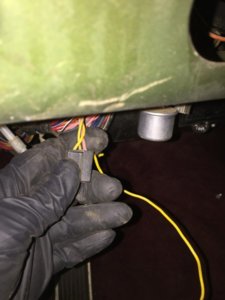miller
Well-Known Member
For what it's worth, automotive wiring can get real messy! (Meaning hard to deal with) Especially on later ones. That being said...
Glenwood is right, about checking the wiring in the column. Problem is probably in there, and to get to it, good chance you'll have to pull it, and tear it down, to actually 'fix' it.
Good luck on it!
Glenwood is right, about checking the wiring in the column. Problem is probably in there, and to get to it, good chance you'll have to pull it, and tear it down, to actually 'fix' it.
Good luck on it!

















